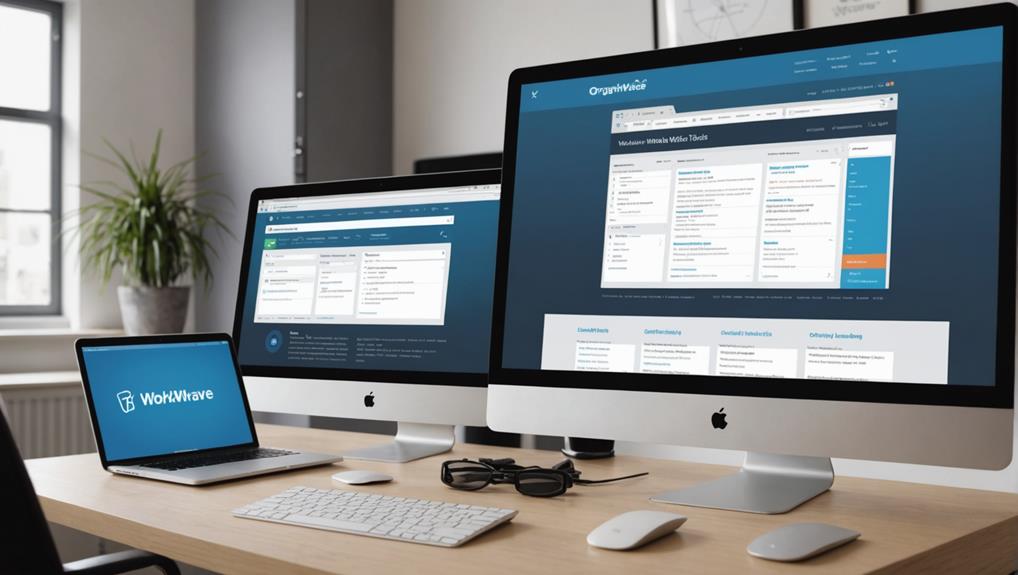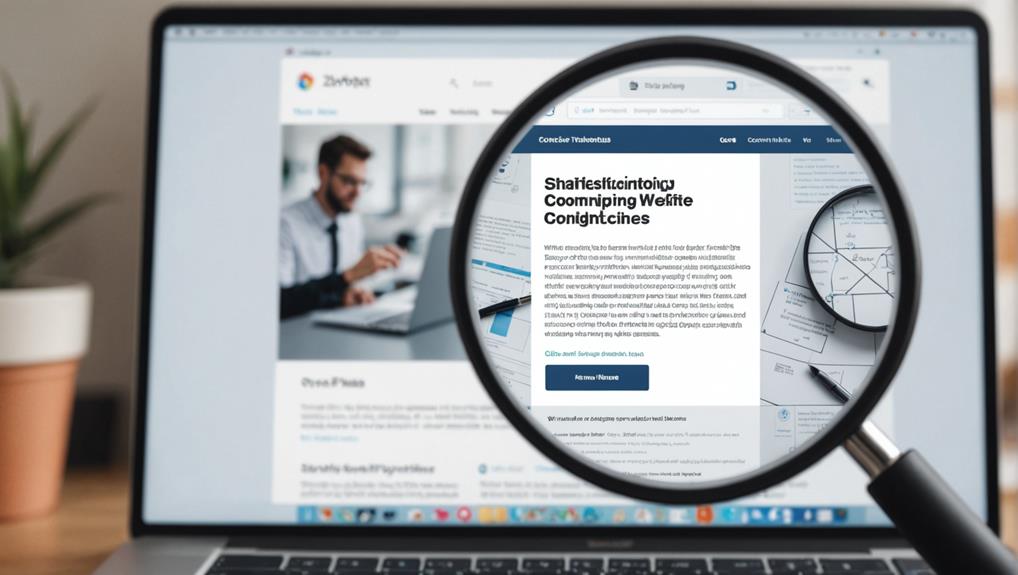In today’s digital era, having a simple website is crucial for any business, especially those offering services. The most basic reason is that most people start with an online search when they want to learn about a product or hire a service. You could miss out on potential customers if your business isn’t online. A simple website helps showcase your services, share customer testimonials, and provide essential contact information. A straightforward website can make your business look more credible and trustworthy to visitors.
A simple website also improves communication with your clients. It can offer a direct way for customers to reach you, ask questions, or book services, making it easier for them to choose your business. Additionally, it provides a platform to highlight what makes your business unique. By being transparent, easy to navigate, and informative, a website can increase your business’s visibility and help build stronger customer relationships. An online presence is essential if you want to grow and stay competitive.
How a Simple Website Can Boost Your Service Business LaunchedKey Takeaways
- A simple website enhances visibility through SEO, attracting more clients and expanding reach beyond local boundaries.
- Well-structured websites are a powerful marketing tool, improving brand visibility and driving targeted traffic.
- Websites facilitate lead generation and sales funnel creation, seamlessly guiding potential customers from the awareness to the action stage.
- Customer data from website analytics enables data-driven decision-making, enhancing marketing strategies and customer targeting.
- Online booking systems and website user-centered features improve customer support and retention, boosting overall business growth.
You Need a Website
While many may overlook the significance of technological advancements in service industries, introducing field service software like WorkWave has dramatically enhanced business efficiency. This software streamlines operations, improving scheduling and dispatching capabilities and offering detailed reporting tools for better tracking and analysis.
For service businesses, an online presence is vital. A website can be potential customers’ initial point of contact, and field service software can enhance this interaction. The software manages appointments, tracks technicians, and optimizes routes, ensuring the customer is served promptly and efficiently. This leads to improved customer satisfaction, an essential metric in the service industry.
Moreover, WorkWave offers a free demo to discover these benefits. This strategic move demonstrates a focus on serving others and allowing potential users to experience the value offered firsthand. Such an approach speaks volumes about the commitment to service and efficiency that underlies the use of field service software.
Best Hiring Practices in Service Business
A systematic approach to hiring and retention is pivotal in the service industry. It begins with a thorough recruitment process aimed at drawing in skilled technicians and extends to creating a competitive and engaging work environment. Utilizing technology tools for recruitment and employee management can streamline these processes, fostering growth and improving retention rates.
Attracting Skilled Technicians
A well-implemented website is an often overlooked yet potent tool in attracting skilled technicians to your service business. This digital platform can be a game-changer in your recruitment efforts. By showcasing job opportunities, detailing roles, and highlighting benefits, your website becomes a magnet for top talent. The transparency and accessibility of information can captivate potential hires, drawing them toward your organization.
Additionally, the website offers an opportunity to display employee testimonials and success stories. This strategic move validates your company culture and fosters a sense of trust and credibility. Skilled technicians seeking reputable companies will find this appealing, enhancing your attractiveness as an employer.
Moreover, an easy online application process further streamlines your recruitment. It simplifies the hiring process for technicians, making your company an attractive choice. This way, a well-designed website differentiates your service business and becomes a powerful tool for attracting and hiring skilled technicians.
Retaining Top Talent
Utilizing top talent within the service industry involves more than just a successful recruitment campaign; it’s a continuous process that demands strategic planning and implementation. Offering competitive salaries and benefits is a strategic move that attracts and helps retain this talent. Online platforms can streamline this process, providing an efficient way to manage employee benefits and compensation.
Furthermore, providing ongoing training opportunities benefits both the employees and the business. This strategy helps develop employees, enhance their skills, and promote loyalty to the company. It is an investment that can result in high returns regarding productivity and service quality.
Additionally, creating a positive work environment is paramount. This can be achieved through clear communication, recognition of achievements, and fostering teamwork. A simple website can help by providing a platform for employee recognition, communication, and training resources. Employing technology tools for recruitment and management can significantly assist service businesses in retaining top talent. Essentially, the key to maintaining top talent lies in a comprehensive approach that addresses the different needs of the employees.
Applying AI in Field Services

Many service businesses are leveraging AI to transform their field services. Applying AI in field services optimizes scheduling and dispatching, increasing efficiency and reducing operational costs. Automating these processes can also improve service quality and overall performance.
Integrating AI algorithms for predictive maintenance is another strategic advantage. This proactive strategy helps prevent equipment breakdowns and minimize downtime. As a result, businesses can provide more reliable services, improving customer satisfaction and fostering loyalty.
AI-powered chatbots can improve customer service by providing instant support and resolving queries efficiently. This not only reduces the workload for service representatives but also increases the responsiveness of the service.
Lastly, utilizing AI analytics in field services is invaluable for data-driven decision-making. Businesses can better understand their customers, tailor their services, and predict future needs by analyzing patterns and trends. This strategic use of AI analytics ultimately leads to better service delivery and a competitive edge in the market. Therefore, the application of AI in field services can transform service businesses by increasing efficiency, reducing costs, and improving customer satisfaction.
Calculating Overhead Costs: A Guide
Understanding and accurately calculating overhead costs is pivotal for service businesses to ascertain profitability and guarantee effective budgeting. This involves identifying all indirect costs of the business’s operation, from rent and utilities to administrative salaries. Regular monitoring and review of these costs can highlight potential areas for savings and contribute to strategic pricing and budget planning.
Identifying Indirect Costs
Diving into the complexities of financial management, it’s necessary to zero in on indirect expenses such as rent, utilities, insurance, and administrative salaries when calculating overhead expenditures. This understanding of indirect costs enables the precise computation of overhead expenses and, in turn, allows for an accurate evaluation of profitability.
- Identification of Indirect Expenses: The initial step in calculating overhead costs is to identify all indirect expenses. These are expenses not directly linked to a specific service, like rent, utilities, and administrative salaries.
- Incorporation into Profitability Evaluation: Once identified, these expenses should be included as a percentage of total revenue to evaluate profitability accurately.
- Regular Monitoring and Review: Overhead costs should be regularly monitored and assessed, allowing businesses to pinpoint areas for cost-saving and efficiency enhancement.
- Price Setting and Budgeting: A thorough understanding of overhead costs is vital for effectively setting service prices and budgeting, ensuring business sustainability.
Overhead Cost Calculation
Exploring the financial terrain of service businesses reveals the need for precise overhead cost calculations. Your business website can serve as a tool in this process. Including rent, utilities, insurance, and administrative salaries gives an accurate overhead cost calculation, vital for setting service prices and budgeting effectively.
To structure your website to aid in this, consider implementing a financial dashboard or page where you can input and calculate these costs. Businesses can assess profitability and financial health by representing overhead costs as a percentage of total revenue. This strategic view can highlight potential areas for cost-saving and efficiency improvements, maximizing profits in the long run.
Understanding and accurately calculating overhead costs equips service businesses to make informed decisions and maintain financial stability. A simple website can streamline this process, making it more manageable and less time-consuming. Therefore, your business website’s strategic structuring can be pivotal in managing overhead costs.
Monitoring Overhead Expenses
Accurately calculating overhead expenses is the cornerstone of financial stability for service businesses. Monitoring overhead expenses is about keeping track of costs and taking a thoughtful approach to optimizing operational efficiency and profitability.
To make the most of monitoring overhead expenses, consider the following:
- Identify all indirect costs – such as rent, utilities, and administrative salaries. Since these expenses are not directly tied to a specific service, understanding them helps to get a complete picture of your operating costs.
- Calculate overhead expenses as a percentage of total income. This will provide a benchmark for evaluating profitability and enabling effective budgeting.
- Regularly review overhead expenses. This can help pinpoint potential inefficiencies and areas where cost-saving measures can be implemented.
- Include overhead expenses in service pricing. Understanding these expenses is essential in setting prices that cover your costs and contribute to your business’s financial stability.
Monitoring overhead expenses is thus a strategic tool for making informed business decisions, enhancing operational efficiency, and driving service business success.
WorkWave: Empowering Your Business

The innovative power of technology finds its true potential in solutions like specialized field service software. These platforms can transform service businesses by streamlining operations and enhancing customer service offerings. Comprehensive software packages with essential features like scheduling, dispatching, and reporting tools are designed to boost efficiency and productivity.
A central aspect of WorkWave’s offering is its ability to improve your business’s online presence. In today’s Digital Marketing landscape, having a professional website that accurately represents your business is vital. WorkWave specializes in helping service businesses enhance their online image, attract more customers, and drive growth.
WorkWave’s expertise in field service management enables your business, allowing you to focus on what matters most – serving your customers. Implementing their extensive software solution improves your operational processes and enhances your online presence.
To fully appreciate the transformative power of WorkWave, businesses are encouraged to contact them for a free demo. This will provide firsthand experience of how their field service software can elevate your business. WorkWave is the ally you need to succeed in service businesses.
Ensuring Website Usability
The usability of a business website is crucial in maximizing client engagement and conversion rates. A focus on user-friendly navigation can significantly streamline the customer path, enhancing their complete experience. By leveraging platforms like Squarespace and incorporating clear navigation elements, service businesses can optimize their website’s usability, fostering a mutually beneficial relationship between the client and the service provider.
User-Friendly Navigation Importance
User-friendly navigation is the foundation of a successful website. Service businesses must prioritize this aspect in their website design to enhance customer retention and satisfaction.
According to studies, as many as 38% of people disengage from a website if the layout or content is unattractive. This emphasizes the importance of a design that is not only visually appealing but also easy to navigate. Moreover, it is reported that 75% of consumers judge a company’s credibility based on their website design.
To make sure your website is user-friendly, consider the following:
- Simplicity: Keep the navigation straightforward and intuitive. Avoid intricate structures that could puzzle visitors.
- Clarity: Buttons and links should be explicit and descriptive. Users should know precisely what to expect when they click on them.
- Consistency: Maintain the same navigation structure across all pages. This reduces the learning curve for users.
- Accessibility: Ensure your website is accessible for all users, including those with disabilities. Use alt-text for images and consider color contrast.
Streamlined Customer Journey
Navigational clarity and a streamlined client voyage can significantly improve a service business’s website usability. Simple, easy-to-follow paths that direct visitors towards desired actions can enhance the client experience. A website built on a user-friendly platform like Squarespace guarantees smooth navigation and a superior client experience.
Prioritizing client needs and experiences in website design can lead to higher conversion rates and client satisfaction. A clear, user-friendly website layout facilitates smooth interactions and transactions, benefiting clients and the business.
The following table highlights the strategic elements and their impacts on the client journey:
| Strategic Elements | Impact on the Client Journey |
|---|---|
| Easy Navigation | Boosts engagement and guides visitors effectively |
| User-friendly Platform | Guarantees a seamless client journey |
| Client-centric Design | Results in higher conversion rates and client satisfaction |
Compelling Call-to-Action Strategies

Shaping your website with a solid Call to Action (CTA) strategy can significantly shift customer behavior toward desired actions. Given the nature of your business’s service, it’s vital to guide your visitors in making decisions that lead to higher conversion rates and improve the user experience.
- Strategically Place Your CTA: Placement matters. The right location can increase conversion rates by 50%. Consider areas of your webpage that naturally draw visitor attention.
- One Main CTA Per Page: Overwhelming visitors with multiple CTAs can lead to decision fatigue. Focus on one primary action you’d like them to take.
- Clear Signposting: Guide your visitors towards desired actions. The easier it is for them to understand what you want them to do, the more likely they will do it.
- Use Clear, Compelling Language: Avoid ambiguity in your CTA. Be clear, concise, and persuasive. This will not only increase conversion rates but also improve user experience.
A well-crafted CTA strategy is more than just a button or a link—it’s critical to your service business’s success strategy. By implementing these strategies, you can better guide customer behavior and drive desired actions.
Optimizing Client-Centric Communication
Understanding and optimizing client-focused communication can make all the difference in service businesses. By tailoring your website’s messaging to address your ideal client directly, you can establish a meaningful connection and demonstrate the value of your services.
Your website is the primary platform for this communication, improving relevance and engagement by speaking directly to your client’s needs and desires. This targeted approach strengthens your connection with current clients and attracts potential ones who resonate with your brand’s messaging.
Below is a table summarizing key strategies to optimize client-focused communication:
| Strategies | Benefits | Implementation |
|---|---|---|
| Address ideal client | Establishes meaningful connection | Use inclusive language |
| Tailored messaging | Demonstrates value | Highlight the benefits of services |
| Speak directly to the client | Improves relevance | Use the client’s language |
| Address pain points and desires | Strengthens connection | Understand the client’s needs |
| Clarity over cleverness | Effective communication | Simplify language |
Achieving Clarity in Messaging

Driving home a point in just 5.59 moments, the average time a visitor spends looking at a website’s central proposition demands absolute clarity in messaging. Clear, concise, and precise messaging not only aids in capturing website traffic but also improves user satisfaction, thereby playing a pivotal role in the success of service businesses.
- Clear Messaging: Clear messaging can boost conversion rates by up to 113%. It facilitates quick decision-making, thereby reducing the bounce rates by 10%.
- Design Impact: 94% of initial impressions are design-related. This underscores the necessity for clear messaging that is visually appealing and easy to comprehend.
- Engagement: 38% of people disengage with a website if the content or layout is unattractive. Therefore, clear and captivating messaging is essential to maintain visitor interest.
- User Satisfaction: Clear messaging can enhance user satisfaction by 20%. Content users are likelier to interact with the website and utilize the services offered.
In essence, achieving clarity in messaging is a strategic undertaking essential for the growth and success of service businesses. It effectively communicates the value proposition to visitors, enriching their experience and involvement.
Guiding Visitors Through Your Website
Exploring a website should be a smooth experience for visitors; this is where clear markers and prominent buttons play a crucial role. They guide visitors through your site’s online terrain and ensure they reach their intended destinations. A well-thought-out plan for this voyage is crucial, mapping out steps and providing a clear route.
Developing a user-friendly navigation system is foundational in this process. Straightforward menus, distinct buttons, and user-friendly layouts streamline the visitor journey, enhancing their complete experience. The goal is to lead visitors to complimentary content, or premium offers through strategic direction on your website.
However, this is not simply about enhancing user experience. It’s about marketing your service in a discreet and refined manner. Directing visitors through your website effectively boosts engagement, decreases bounce rates, and ultimately boosts conversions. This calculated approach transforms your website from an introductory digital pamphlet to a dynamic marketing instrument. Forming an effective navigation system is an investment in your business’s future growth and success. It’s not just about making your website easy to use; it’s about guiding your visitors to the value you provide.
Website as a Marketing Tool

In service businesses, a website is an essential marketing tool, enabling the strategic use of SEO to find new customers and foster growth. A well-organized website, combined with effective search engine submission, can improve brand visibility on a global scale. Additionally, incorporating social media on these platforms boosts brand exposure and strengthens website visibility in search engine results.
SEO Strategies
Utilizing the power of efficient SEO strategies can significantly enhance the visibility of a service-based business. A well-designed website optimized for search engines is a potent tool that can attract more clients and expand your business.
- Driving Targeted Traffic: SEO can help propel targeted traffic to your website. By optimizing for specific keywords linked to your service, you can attract potential clients actively seeking your services.
- Increasing Visibility: Proper website layout and search engine submission can help your business rank higher in search results, enhancing your visibility to potential clients.
- Expanding Reach: A website allows your business to extend its reach beyond local boundaries. With effective SEO, you can attract clients worldwide, broadening your customer base significantly.
- Enhancing Natural Traffic: SEO enhances website visibility in search engine results, bringing in more natural traffic. This can improve your brand’s reach and help you attract more clients naturally.
Brand Visibility Enhancement
A well-structured website is a powerful marketing tool that significantly improves brand presence. Service businesses can dramatically enrich their brand visibility by expanding their reach beyond local areas to a global audience. This broader audience exposure is an essential benefit that websites offer. It allows companies to showcase their products, services, and expertise, establishing credibility within their industry.
Search engine optimization (SEO) is crucial for enriching brand visibility through a website. SEO drives targeted traffic to websites, increasing online presence for service businesses. An effective SEO strategy helps companies rank higher in search engine results and enables them to reach their target audience more efficiently.
Integrating social media into a business’s website can also increase brand exposure and visibility to a broader audience. This integration is a strategic move that ensures the business’s online presence is consistent across different platforms.
Lead Generation and Sales Funnel
Utilizing the power of a fundamental website can effectively fuel lead generation and guide visitors through the critical stages of the sales funnel: Awareness, Assessment, and Action. In service businesses, this strategy proves invaluable, transforming casual website visitors into loyal customers.
- Awareness: At this initial stage, your site should offer empathy-driven content that resonates with potential customers, making them aware of the challenges they face that your business can resolve.
- Assessment: As visitors progress into this phase, your website should provide solutions to their challenges. Testimonials and case studies can serve as social proof, encouraging visitors to assess your service over competitors.
- Action: The final stage involves persuading the visitor to take action. Implementing an eCommerce platform can streamline this process, making purchasing your service as simple as a few clicks.
- Automation: An eCommerce platform can automate the sales process, ensuring seamless conversion of website visitors into customers and enhancing your service business’s performance.
A fundamental website can become a potent lead generation and sales funnel tool, maximizing your service business’s growth potential.
Importance of Data Collection and Analysis

While a well-crafted website serves as a potent tool for lead generation and sales funnel management, it also has the potential to collect and analyze crucial client data. This data can offer invaluable insights into customer behavior and preferences when utilized correctly.
Businesses can acquire detailed information about website traffic, user engagement, and conversion rates using intelligent tools such as Google Analytics. These insights uncover who your customers are and illustrate their online behavior, enabling you to adjust your strategies accordingly.
Understanding your customer demographics through data gathered from your website is essential for effectively targeting your audience. This information allows you to customize your services to meet your customers’ needs more precisely, enriching their experience and fostering loyalty.
Furthermore, data-driven decision-making based on website analysis is essential for improving marketing strategies and driving business growth. It offers an evidence-based approach to making strategic decisions and eliminating guesswork. By monitoring website data, businesses can make informed decisions that enrich customer experience and drive conversions, leading to heightened customer satisfaction and business success.
Enhancing Customer Support and Retention
User-centered features such as FAQs, chatbots, and contact forms integrated into a website serve as instant solutions to user queries, offering exceptional support around the clock. These mechanisms allow for immediate resolution of concerns, promoting a sense of reliability and trust.
A website is a platform for continuous customer communication, effectively increasing engagement and retention rates. In addition, regularly updated information and content keep existing customers informed, engaged, and satisfied with the service.
- Online Booking and Scheduling Systems: These tools improve customer convenience by providing an easy and seamless booking process.
- Instant Customer Support: FAQs, chatbots, and contact forms provide immediate assistance, enriching customer satisfaction and loyalty.
- Regular Updates: Keeping customers informed of the latest offerings and updates nurtures a sense of belonging and connection.
- Ongoing Communication: Regular customer communication through newsletters, blogs, or social media updates can enhance customer retention.
A simple website can significantly improve customer support and retention with these strategies, contributing to a service business’s overall success.
Establishing Authority Through Your Website

An influential website is a powerful tool for establishing credibility and trust in a service business. It can enhance a company’s credibility by up to 75%, creating a lasting impression. Displaying expertise and successful projects can build trust, providing potential customers with tangible evidence of your competence.
Furthermore, establishing authority isn’t just about promoting your credentials; it’s about providing value. Consistently updating blogs demonstrates your knowledge while offering online courses presents a practical way to showcase your expertise. These courses not only educate your audience but also generate passive income, thereby serving dual purposes.
Testimonials and case studies are essential in establishing authority. These elements showcase your proven track record, reassuring potential customers that you can deliver on your promises. They provide social proof, reinforcing your credibility.
Strategically crafted, your website can become a guiding light of authority in your industry. It can serve as a platform where your expertise, successful projects, and client satisfaction all converge, creating a compelling narrative that appeals to potential customers. In this way, a simple website can significantly enhance your service business, marking you as a leader in your field.
Improving Customer Service and Communication
Building on the theme of authority, a well-designed website also enhances a service business’s customer service and communication. The digital platform serves as a bridge, connecting customers to your business anytime, anywhere. This accessibility improves customer service and fosters a seamless communication channel.
- Instant Support: Websites offer immediate support through features like FAQs, chatbots, and contact forms. This reduces customer wait times and improves the overall service experience.
- Online Booking: Integrating online booking and scheduling services streamlines business processes. It offers customers the convenience of booking services at their comfort, enriching their experience.
- Email Marketing: Websites allow for effective email marketing, essential for maintaining customer engagement. Regular, informative emails foster a strong rapport with customers while informing them about your offerings.
- Regular Updates: Keeping your website content updated ensures customers are informed about your business’s latest updates, promotions, or changes.
A well-structured website is a powerful tool for improving customer service and communication. It offers an immediate, convenient, and effective means to serve your customers, enhancing your service business.
Frequently Asked Questions
How Can a Website Promote a Business?
A website promotes a business by enhancing credibility, supporting growth, and increasing sales. It extends a business’s reach beyond local areas and accentuates distinctive offerings, helping it stand out in a competitive market.
Can a Website Boost Your Business?
A website dramatically enhances your business by improving credibility, promoting accessibility, and facilitating customer engagement. It can increase sales, drive growth, and positively influence consumer perception, making it a vital tool for business success.
How Does a Website Benefit a Business?
A website significantly expands a business’s reach, enabling global exposure. It improves credibility, promotes services, and increases sales. Furthermore, it provides customer convenience through accessible information and online booking systems, fostering positive customer experiences.
What Are the 5 Key Purposes of a Website?
A website for service businesses serves five significant purposes: acting as an online storefront, expanding market reach, showcasing expertise and credibility, providing customer convenience, and differentiating from competitors by highlighting distinct services.
Conclusion
To sum up, the importance of an essential website for service businesses should not be underestimated. It’s crucial in displaying services, attracting potential customers, and improving communication. It offers a platform for establishing expertise, enhancing customer service, and fostering growth. Consequently, lacking a website in today’s digital era would be like sabotaging one’s efforts. A strategic investment in a well-crafted website can truly revolutionize service businesses.

Erik Remmel is a co-founder of Launched, a platform that helps businesses grow through AI-powered marketing, automation, and lead generation. He focuses on building scalable systems that convert cold leads into customers while streamlining operations with smart, AI-driven workflows.

